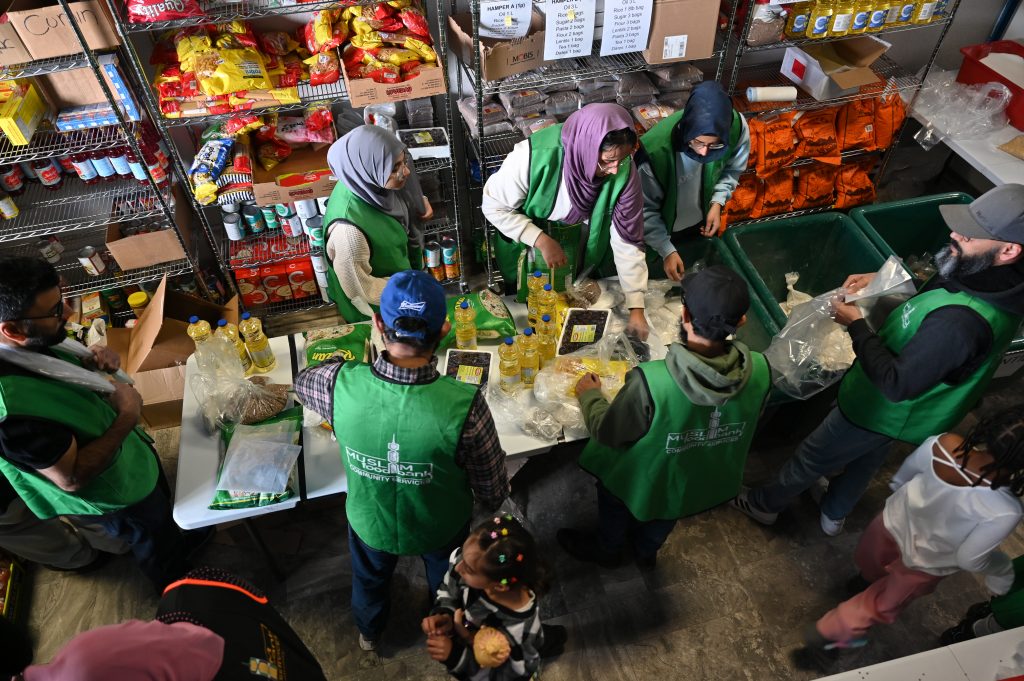Food banks in B.C. expected to shatter records this year

Posted September 11, 2024 7:24 am.
Last Updated September 11, 2024 7:25 am.
There is a grim outlook for food banks across B.C.
“We are looking at record-breaking client numbers in 2024,” Dan Huang-Taylor, executive director of Food Banks BC, told 1130 NewsRadio Vancouver.
He says earlier this year, the organization eclipsed 100,000 unique visitors to agencies in a single month — the first time that’s occurred since food banks began operating in B.C. more than 40 years ago.
CLICK HERE TO LISTEN TO 1130 NEWSRADIO VANCOUVER LIVE!Huang-Taylor says the increase in monthly visits from 2019 to 2024 has jumped 81 per cent. He explains there are three main reasons why people are reaching out for help: the cost of food, low wages, and the cost of housing.
“We see no signs that these numbers will start to come down anytime soon … and this is on the back of a period where the economy was still recovering from the impacts of COVID-19. We see the devastating impacts of climate change on our province and what that’s doing to create emergency food insecurity for people impacted directly,” he explained.
“It’s also impacting those sectors, but we’re seeing many different reasons contributing towards what is really a crisis.”
Huang-Taylor says things are going from bad to worse in B.C. and he’s pushing all levels of government to help bring wages up across the board, not just for those earning minimum wage, and to create accessible, affordable housing.
“There is a significant disparity between the minimum wage and the living wage in B.C. I think it’s around eight dollars if you’re living in the Lower Mainland. For every hour you’re working, you are eight dollars short of being able to cover life’s essentials. That requires some significant policy changes.”
Quick facts, according to Food Banks BC:
- Age of individuals served at food banks has stayed fairly consistent over the last eight years, with approximately 30 per cent children, 10 per cent seniors and 60 per cent adults
- Clients citing job income as their primary source of income represent 23 per cent of food bank users, which is the highest income source category
- From 2022 to 2023, increase in clients identifying as immigrants or refugees rose from seven per cent to 26 per cent. Over the same period, the increase in clients who are visible minorities rose from 13 per cent to 27 per cent.
- Top reasons people cite for accessing food banks are: cost of food, low wages, cost of housing.
A growing and concerning trend is the number of professionals working full-time whose salaries don’t cover the cost of groceries.
“The working-poor scenario. That’s a trend that we’ve been seeing across the country and certainly here in B.C. It’s been one of the largest client groups of growth that we’ve seen in the last couple of years,” he explained. “People’s wages are not keeping up with the cost of living. Housing is becoming more unaffordable. The increasing cost of food at the grocery store and just general inflation are creating a lot of very difficult times for British Columbians.”
“Immigrants and refugee clients coming to food banks has been another very noticeable shift in the client groups. We’re seeing a lot of post-secondary students coming to food banks and that’s been a trend over the last couple of years, as well.”
Huang-Taylor adds that in addition to seeing a spike in demand, donations to food banks are down.
“It’s a perfect storm, but they’re a resilient group and they will find ways to ensure the people who come to them for services are getting support. That might mean they’re leaning more into their cash reserves or finding more innovative ways to access food and work with new donor partners to source fresh produce.”
However, Huang-Taylor warns its skyrocketing usage levels won’t be a sustainable model for much longer.
“We are seeing increases in pretty much every community throughout B.C. I think at any time where someone needs to access food from a charitable organization because they can’t afford it themselves, is unacceptable. In a country that is as wealthy as Canada, we should not accept this situation that we find ourselves in,” he said.
“Forty-three years ago, when the first food banks opened in B.C., they were serving a couple of hundred people… and here we are, the numbers have never been greater. It’s a pretty bleak picture, if I’m being honest.”
He says discussions are underway with the government and various stakeholders to help ease the pressure. Huang-Taylor says there may be a breaking point, but he’s not sure when and what the consequences will be.








